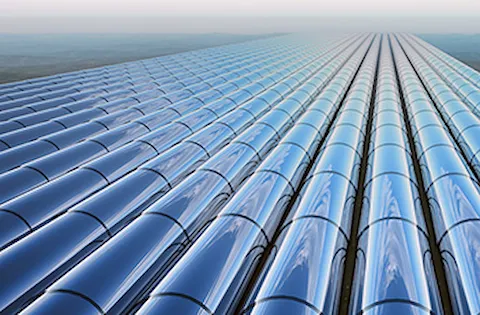Transportation of hydrogen gas in offshore pipelines: H2Pipe
Joint industry project
A joint industry project to develop the world's first guideline for transport of hydrogen gas in existing and new offshore pipelines.
Hydrogen can play a significant role in decarbonizing the world’s energy supply to mitigate climate change, and hence is becoming an important part of many companies’ strategies to build a clean-energy business. In this regard, several industry players are currently exploring ways of transporting hydrogen gas as an addition or replacement for natural gas.
For steel pipelines, it is well recognized that hydrogen may promote hydrogen embrittlement which potentially could have an adverse effect on the pipeline integrity and the understanding of the real design limitations.
Challenge
Several industry players are currently exploring ways of transporting hydrogen gas (either pure hydrogen or a hydrogen and natural gas blend) as an addition to or replacement for natural gas. In this context, both new pipelines and utilization of existing infrastructure (re-qualification of pipelines) are viable options. A large-scale deployment of pipelines for hydrogen transport, however, requires that the best possible balance between safety and cost-effectiveness can be established to allow for optimal design of new pipelines, or possibly assessment of the use of existing pipeline infrastructures.
There is today no offshore pipeline code covering hydrogen transport or mix of hydrogen. A new revision of the ASME B31.12 design code was issued in 2019. This new revision may reduce the conservatism for transporting hydrogen, however, it lacks offshore specific design issues.
Solution
The need for developing a pipeline code for design, construction and operation of offshore pipelines is therefore well recognized and supported by the industry. The DNV standard for submarine pipeline systems (DNV-ST-F101) is a well-recognized standard for safe and reliable design and operation of submarine pipelines. Even though the standard includes hydrogen as a listed transport product, additional considerations are required to meet the target safety level. Consequently, it is important to ensure that DNV-ST-F101 has reliable design and material requirements that do not compromise the pipeline integrity and safety.
To meet the above challenges, DNV in 2021 started the first phase of a joint industry project (JIP) with the objective to develop a guideline for safe and reliable design, re-qualification, construction and operation of pipelines intended for transportation of hydrogen gas. The first revision of the guideline was delivered to participants late 2021. Due to limited available data related to how hydrogen gas may affect the material properties, the first revision of the guideline includes many functional requirements.
Due to large number of participants, it was agreed to start an initial mechanical test program as part of Phase 1. The objective of the initial test program was to fill gaps in existing knowledge and to explore various test parameters as an attempt to narrow down the number of variables for the main test program in Phase 2.
The Phase 2 of the JIP is planned to start in Q1 2023 and will have a 2-year duration. Phase 2 will consist of a comprehensive experimental test program to enhance the understanding of the governing hydrogen embrittlement mechanisms and how hydrogen affects the integrity of the line pipe material. The results from this test campaign would allow DNV and participants to further develop the guideline to a level where it can offer direct and detailed support in design and re-qualification of offshore hydrogen pipelines. In addition to the experimental test campaign, Phase 2 will also include tasks such as a feasibility level design of offshore hydrogen pipelines and a risk assessment study to look at safety aspects of offshore hydrogen pipelines.
The guideline is currently available to participants only, but will eventually be converted into a public DNV recommended practice.
Benefits
The key benefits of performing this JIP are to:
- Enhance the general understanding on how hydrogen gas affects the material properties (both as 100% H2 and a blend with natural gas) and further the real design limitations.
- Provide a better understanding on how a pipeline system can be designed for safe hydrogen gas transportation, and if necessary, which mitigation measures that should be put in place.
- Ensure less conservative design and material requirements.
- Provide a better understanding how third-party interference may affect the pipe integrity.
- Enable possibly higher pressure and flow capacity.
- Ensure a better utilization of the pipeline system.
- Ensure better economy.
Value
It is essential to develop more accurate, reliable, and possibly less conservative code requirements for hydrogen pipelines and to have a better understanding of the real design limitations. Cost-efficient hydrogen delivery is a key, and both newbuilt and requalification of existing natural gas transportation pipelines will play an important role in this respect. To realize an efficient infrastructure, it is of utmost importance to establish requirements that ensure the combined need for safety and cost-effective design to make hydrogen transportation a viable option.
JIP participation
If you would like to join this JIP, kindly contact us.
The cost for Phase 1 is NOK 500,000.
The cost for Phase 2 is NOK 1 500,000.

